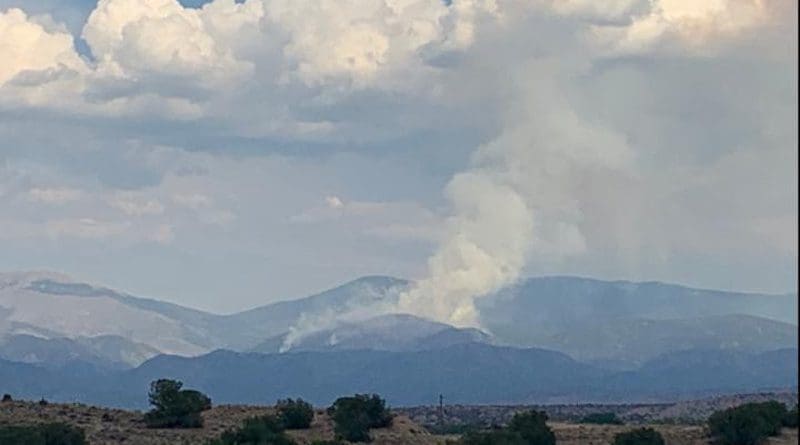Probing Wet Fire Smoke In Clouds: Can Water Intensify The Earth’s Warming?
A first-of-its-kind instrument that samples smoke from megafires and scans humidity will help researchers better understand the scale and long-term impact of fires–specifically how far and high the smoke will travel; when and where it will rain; and whether the wet smoke will warm the climate by absorbing sunlight.
“Smoke containing soot and other toxic particles from megafires can travel thousands of kilometers at high altitudes where winds are fast and air is dry,” said Manvendra Dubey, a Los Alamos National Laboratory atmospheric scientist and co-author on a paper published last week in Aerosol Science and Technology. “These smoke-filled clouds can absorb much more sunlight than dry soot–but this effect on light absorption has been difficult to measure because laser-based techniques heat the particles and evaporate the water, which corrupt observations.”
The new instrument circumvents this problem by developing a gentler technique that uses a low-power, light-emitting diode to measure water’s effect on scattering and absorbtion by wildfire smoke and hence its growth. By sampling the smoke and scanning the humidity from dry to very humid conditions while measuring its optical properties, the instrument mimicks what happens during cloud and rain formation, and the effects of water are measured immediately. Laboratory experiments show for the first time that water coating the black soot-like material can enhance the light absorption by up to 20 percent.
The instrument will next be tested and the water effects probed in smoke from wildfires sampled at Los Alamos’ Center for Aerosol-gas Forensics (CAFÉ). Los Alamos will be deploying instruments to Houston next year as part of the DOE Atmospheric Radiation Measurement (ARM) facility’s Tracking Aerosol Convection Interactions Experiment (TRACER) campaign. Los Alamos’s effort, called TRACER-CAT, will measure how water uptake by soot interacts with deep convective storms.

